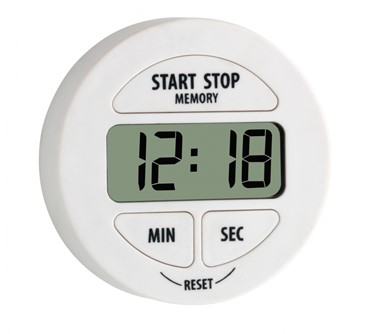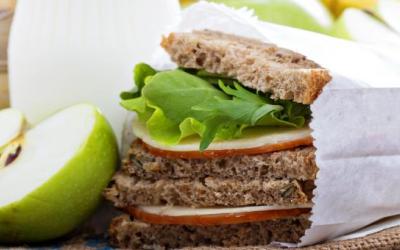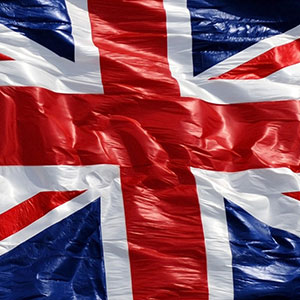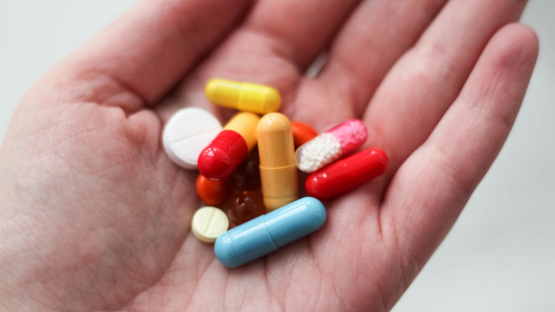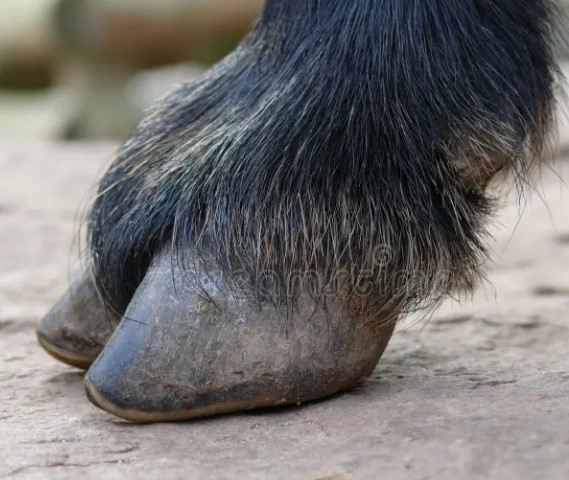Experts propose to exclude beef and apples from the list of social products
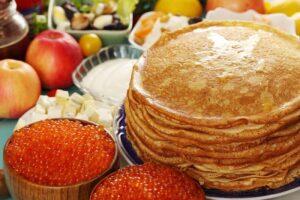
The government's actions to limit prices for socially important products have a positive result, mainly in terms of the psychological effect for consumers, and the list itself needs to be revised. Such conclusions are contained in a study of the state of food security in RUSSIA in the context of high volatility in consumer prices in 2021-2022. The document prepared by the Center for Agricultural Policy of the Institute for Applied Economic Research of the RANEPA is at the disposal of RBC. The HEAD of the center, Natalia Shagaida, confirmed the development of the study, but declined to comment further.
The Center for Agricultural Policy of the IPEI RANEPA has been monitoring food security in Russia since 2014. Its purpose is to assess the consequences of government decisions or extreme situations that affect the country's food security. Initially, studies were done every two years, and since 2020 - annually.
A 2022 study examines ways to counter price spikes, in particular the practice of capping prices on socially important products. We are talking about essential food products from the list approved by the government. The state can intervene in their pricing if a product from the list has risen in price at least in one of the regions by more than 10% (except for the seasonal factor) for 60 consecutive days - then limit retail prices can be set for it for up to 90 days. days. This mechanism was introduced in Russia in 2010. Initially, the price increase threshold at which the authorities introduced the price limit was higher - 30%, but at the end of 2020 it was lowered.
Price limits for products will be set according to new rules.What is important to know Business
The list of socially significant products includes 24 products, including certain types of MEAT (beef, pork and lamb - except for boneless meat, as well as chicken), frozen whole fish, butter (butter and sunflower), drinking MILK and eggs, bread and FLOUR, cereals (millet, polished rice, buckwheat), vegetables (potatoes, fresh white cabbage, onions and carrots), as well as apples.
Why revise the list of social products
“Public discussions and government actions to limit prices have a positive result, mainly in terms of the psychological effect. Given this, as a recommendation, the government was asked to reduce the list of socially significant products, ”says a study by the Center for Agricultural Policy of the IPEI RANEPA.
Read on RBC Pro Non-resident mistake: how Russian companies ban work from abroad What awaits the world in 2023: Musk, Bezos, Dimon say Five investments in the Russian market in 2023:Analysts' Choice How Saudi Arabia's investment fund is trying to buy its futureExperts, in particular, propose to exclude from the list those products that are included in the diet of the most affluent families (for example, beef), or are largely imported (for example, apples), or occupy a negligible share in the family budget.
The head of the National Meat Association, Sergei Yushin, agrees that the list of socially important products needs to be revised, since the list approved 12 years ago is “rather primitive and does not reflect the current state of both production and retail trade.” So, the list includes meat exclusively on the bone, but now the price does not directly depend on this factor, the expert points out: “Certain cuts on the bone, for example dry-aged rib eye on the bone, will cost 10-15 times more than regular boneless beef” . At the same time, the list does not include the cheapest product - minced meat, and there is no turkey in the list of social products, although it is cheaper than many types of meat. Meat consumption in Russia over the past ten years, according to expert estimates, has grown by 10%.
Fish and seafood are among the "vulnerable group of goods" that consumers refuse in the first place in the event of cost reduction, said German Zverev, president of the All-Russian Association of Fish Industry (VARPE). The list of socially significant products includes "whole frozen fish - a rather unpopular product for the modern consumer, since it is more difficult to prepare - it requires cleaning and cutting," the president of VARPE points out. “Inclusion of pollock or pink salmon fillets on the list would be a good help for consumption growth,” Zverev believes.
There is no point in revising the list of socially significant goods in order for the state to regulate their prices in the future, Artem Belov, DIRECTOR general of the National Union of Milk Producers, believes. The competition for a buyer between retail chains and manufacturers makes it possible to effectively regulate prices for socially significant products without government intervention, the expert is sure. “Products that are among the most common and affordable are traffic-generating in retail chains - accordingly, retail chains are trying to keep the most comfortable prices for these products for the consumer,” Belov points out. Beef is one of the most expensive types of meat, the expert agrees. “But to say that it is exclusively consumed by high-income consumers is not entirely correct,
What are the effects of government measures to limit food prices
The transition to new criteria for the introduction of marginal prices for socially significant products in 2020 (the transition from 30% growth to 10%) led to a situation where there were many such cases and the state could no longer impose restrictions, the Center for Agricultural Policy notes. For example, in the period from April 29 to May 6, 2022, there were grounds for introducing marginal prices for 16 out of 24 socially important products, only if you look at the average prices in the country (there were more such cases in the regions). “Obviously, such obligations of the state to administer this norm are unbearable, and the effect is small,” the researchers note.
The contribution of socially important products, for which the state can introduce a maximum retail price, to the price increase is small: for the annual period lasting from August 2021 to August 2022, the price increase for all food products amounted to 14.7%. Of these, socially significant accounted for only 3.3 percentage points. The largest contribution to the growth of nominal prices in the period under review, taking into account the volume of consumption, was made by meat products - 0.9 p.p. growth. Contribution of 0.5 p.p. fell on butter, milk and granulated SUGAR.
FAS proposed to give the new regions a mechanism to control prices for products Business
An analysis of the world practice of price restrictions proves that it “does not have good results”, except in cases where the price increase is caused by a short interruption in supply, the study notes: only in this situation, restrictions - both direct and indirect - before the resumption of supply contribute to reducing social stress and do not lead to losses of participants in the food chain.
The introduction of a price limit on certain types of sugar and sunflower oil in 2020 did not stop the price growth even for these products in general, not to mention the fact that this restriction was not noticeable as part of the overall price increase, experts say. Price-restricted foods accounted for just 3.4% of total household consumption spending, or 8.6% of the value of the top ten food groups in 2021.
The indisputable plus of discussing or introducing restrictions on the trade markup is the psychological effect, the authors of the study point out: “The measure is easy to implement and administer, buyers receive a signal that they are thought of, but this does not guarantee a restriction on their food costs in general and the availability of the product itself in the future” .
But limiting the markup on one or the entire group of socially important products will lead to a redistribution of trade costs and its profit margin to other groups of goods, as happened when limiting the retail price for one type of sugar and one type of sunflower oil, the RANEPA warns. More productive, in their opinion, is the existing practice, when large networks voluntarily choose several types of social goods, for which they themselves minimize retail prices.
The Ministry of Agriculture believes that the agreements on stabilizing prices for granulated sugar and sunflower oil, concluded in December 2020, made it possible to maintain a stable level of prices for these products during a period of rush demand and ensure the availability of socially significant products for the population. And the support measures provided by the state to producers helped maintain the necessary profitability of enterprises, provide the domestic market with sufficient volumes of these products, reduce the dependence of domestic prices on the world market, the ministry stressed, adding that now the price situation in the sugar and sunflower oil market is stable.
On the economic affordability of products
The share of food in consumer spending in 2020-2021 decreased from 37 to 36.3%, experts from the Center for Agricultural Policy of the IPEI RANEPA state. Such a reduction is typical for all household income groups, with the most vulnerable families reaching the level of the pre-pandemic year (in 2021, the actual cost of a rational set per person per year ranged from 51.3 thousand to 85.6 thousand rubles), while while wealthier consumer groups are still spending more than in 2019 (from 93.5 thousand to 133.4 thousand rubles).
Discounts and promotions returned to grocery stores Business
In 2013–2016 and 2020–2021, food prices grew faster than the nominal cash income of the population. However, it was at the end of 2020 that the reaction of the population was especially acute, RANEPA experts point out. The sharpness of the perception of a rise in the price of products in 2020–2022 is caused not so much by the growth itself, but, obviously, by the fact that since 2014 periods have been accumulating when the growth rate of prices is higher than the growth rate of nominal income, the researchers believe.
Since 2012, only in 2014 and 2015, the situation with the purchasing power of families was worse than in 2021, the Center for Agricultural Policy states. The index of the physical volume of food purchases by the population in 2021-2022 compared to the corresponding month of 2012 is lower (except for the peak of rush demand in February-March) by 8-10%.
A sociological survey of food well-being conducted in May-June 2022 shows that Russians respond to rising prices primarily by reducing the fish and meat diet, then they reduce purchases of dairy products and fruits, and in 2022 vegetables, sugar and cereals were added to this list . Russians from year to year try to find products and shops cheaper, do not refuse the usual products, but buy them in smaller quantities; in 2022, the Russians were forced to reconsider their attitude to subsidiary farming and more often intend to expand food production in the interests of self-sufficiency, the study says.
The census showed a decrease in the number of personal farms and vegetable gardens Business
Read together with it:
- The Russian Ministry of Agriculture proposes extending veterinary regulations until 2032.The extension includes regulations for the prevention and eradication of diseases such as bradsot (Clostridium septicum), trichinosis (Trichinella), blackleg (Clostridium chauvoei), and porcine reproductive and respiratory syndrome (PRRS). The proposed changes stipulate the following new deadlines: for bradsot and trichinosis - from March 1, 2......
- A fire at the Merci Agro Sakhalin pig farm killed 1,500 pigs, but pork production will not be affected.Deputy Minister of Agriculture and Trade of the region Inna Pavlenko noted that other pig farms will help compensate for the loss. Merci Agro Sakhalin plans to restore its capacity and livestock, which will help avoid a pork shortage on the local market. The restoration will be funded by insurance payments, and veterinarians have already analyzed the condition of the remaining animals and determin...
- An HSE expert reported on the "evolution of inequality" in access to healthcare.An HSE researcher analyzed Russians' access to healthcare over a ten-year period. In 2021, the influence of financial factors became noticeable for the first time: low income reduces the likelihood of visiting a DOCTOR.Over the ten years from 2011 to 2021, the number of Russians requiring medical care but not receiving it remained virtually unchanged, according to a study by Lyudmila Zasimova, hea...









